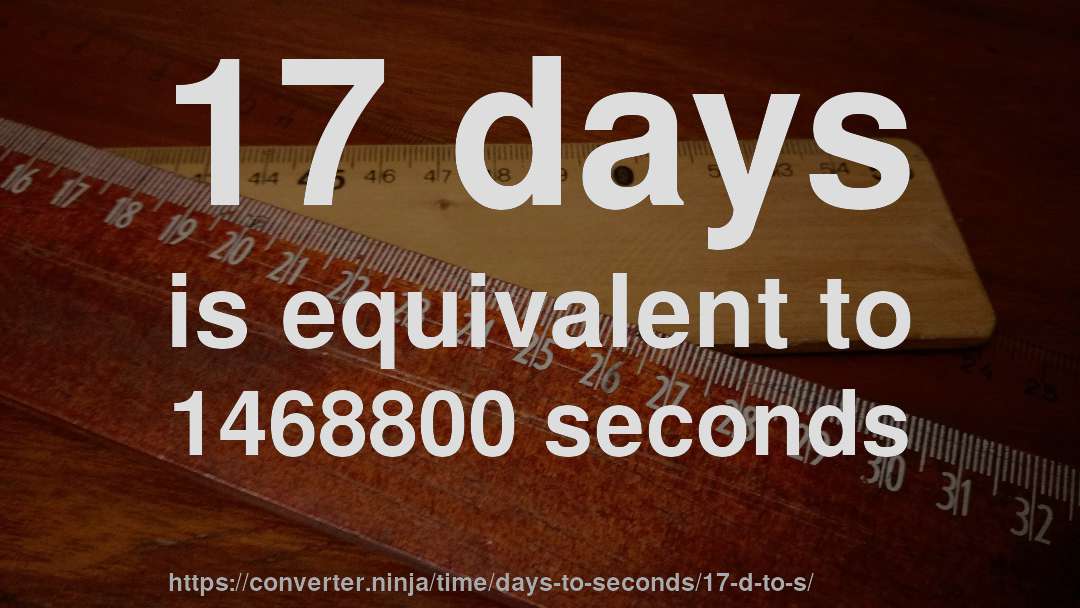17 d to sec - How long is 17 days in seconds? [CONVERT] ✔

17 days is equivalent to 1468800 seconds.
We know (by definition) that: 1 d = 86400 sec
We can set up a proportion to solve for the number of seconds.
1 d 17 d = 86400 sec x secNow, we cross multiply to solve for our unknown x:
x sec = 17 d 1 d * 86400 sec → x sec = 1468800 secConclusion: 17 d = 1468800 sec
The inverse of the conversion factor is that 1 second is equal to 6.8082788671024e-07 times 17 days.
It can also be expressed as: 17 days is equal to 1 6.8082788671024e-07 seconds.
Approximation
An approximate numerical result would be: seventeen days is about one million, four hundred and sixty-eight thousand, eight hundred seconds, or alternatively, a second is about zero times seventeen days.
Units involved
This is how the units in this conversion are defined:
Days
"A day is a unit of time. In common usage, it is either an interval equal to 24 hours or daytime, the consecutive period of time during which the Sun is above the horizon. The period of time during which the Earth completes one rotation with respect to the Sun is called a solar day. Several definitions of this universal human concept are used according to context, need and convenience. In 1960, the second was redefined in terms of the orbital motion of the Earth, and was designated the SI base unit of time. The unit of measurement day, redefined in 1960 as 86 400 SI seconds and symbolized d, is not an SI unit, but is accepted for use with SI. A civil day is usually 86 400 seconds, plus or minus a possible leap second in Coordinated Universal Time (UTC), and occasionally plus or minus an hour in those locations that change from or to daylight saving time."
Seconds
"The second (symbol s) is the base unit of time in the International System of Units. It is qualitatively defined as the second division of the hour by sixty, the first division by sixty being the minute.[3] SI definition of second is the duration of 9 192 631 770 periods of the radiation corresponding to the transition between the two hyperfine levels of the ground state of the caesium 133 atom. Seconds may be measured using a mechanical, electrical or an atomic clock. SI prefixes are combined with the word second to denote subdivisions of the second, e.g., the millisecond (one thousandth of a second), the microsecond (one millionth of a second), and the nanosecond (one billionth of a second). Though SI prefixes may also be used to form multiples of the second such as kilosecond (one thousand seconds), such units are rarely used in practice. The more common larger non-SI units of time are not formed by powers of ten; instead, the second is multiplied by 60 to form a minute, which is multiplied by 60 to form an hour, which is multiplied by 24 to form a day. The second is also the base unit of time in other systems of measurement the centimetre–gram–second, metre–kilogram–second, metre–tonne–second, and foot–pound–second systems of units."
[1] The precision is 15 significant digits (fourteen digits to the right of the decimal point).
Results may contain small errors due to the use of floating point arithmetic.ncG1vNJzZmibn6PDpr7Tnqlnppmjt6J706KknmeUlsa0edOoZKydk6S7pb%2BOam5mnF2pvG6%2Fjg%3D%3D